IT Find series 3/2020: What do you associate with it?
Join us on a journey into the past: What is this object and what do you personally associate with it? Tell us your story!
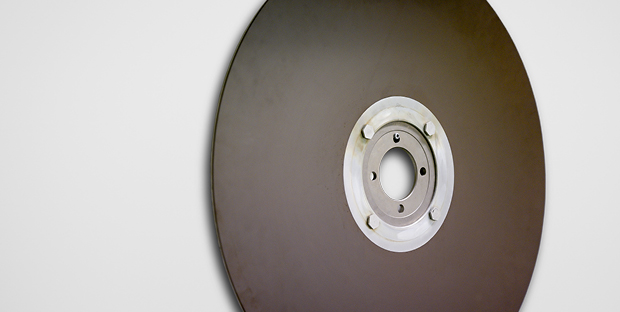
It is very interesting to compare prices with those back in the day. These days, you can get 4 TB of storage for less than 100 CHF. By that reckoning, the memory shouldn’t have cost $250,000, but a mere 0.03 CHF. More comparisons are provided in the post below.
Our history / our gift
IT Services received a “gift of considerable significance” from Carl August Zehnder in the form of an old magnetic disk. Carl August Zehnder was a full professor for IT at ETH, specialising in the development and use of large-scale IT systems, information management, the management of IT projects, IT training and IT law. He served at ETH with interruptions between 1958 and 2003.
A handwritten note addressed to Rui Brandao stated that the disk came from ETH’s first commercial computer, a CDC 1604A dating back to 1964. “In 1964, ETH bought its first industrially produced computer from the Control Data Corporation, the CDC 1604A. A dedicated organisation – the Data Centre – was established to operate it (ETH History)”. “The decision was ultimately made to purchase a CDC 1604A computer., The ‘Control Data Corporation’ (CDC) was established in 1957, producing not only peripherals to supply to other computer manufacturers but also its own mainframe computers. CDC’s first chief designer was Seymour Cray, who later went on to found his own company that would become synonymous with powerful supercomputers. … The new computer installation was located in the main building in the same area where the ERMETH was previously located (IT at ETH Zurich 1948–1981 Between science and service)” (in German).
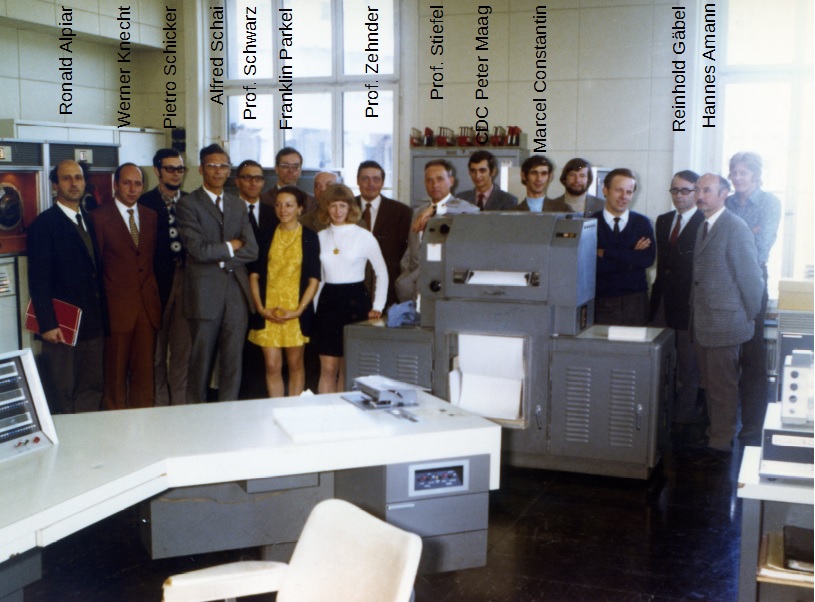
The 1604-A was part of the generation of computers where data was processed sequentially from a high-speed magnetic tape. The main computer processed one program at a time in the order that they were input, just as they had been previously copied onto the magnetic tape in stacks using a separate, small machine.
Research
IT Services was very pleased to have received this genuine piece of history, and this disk, measuring around 66 cm in diameter, is now mounted on the wall in its ETH building. One of the IT Services staff believed that the disk was part of a cylinder that was used to hold several such disks in a stack. When trying to put some information onto the disk, some pieces of the puzzle began to come together. Some information on the CDC 1604-A was available on the ETH history page: http://www.ethistory.ethz.ch/rueckblicke/verwaltung/informatikdienste/material_dokumente/artikel_schai2.pdf (in German). But this page does not mention the CDC 1604-A having any magnetic disk storage.
Inspired to play detective
Through Andreas Dudler, the former of Head of ITS Management, ETH Zurich, we made contact with Peter Staub of ETH’s Contract Management and retired Deputy Director of IT Services. While he had never personally worked on the CDC 1604 or the CDC 1604A, he did have the opportunity to talk with former colleagues from back in the day who had worked on these systems. But they had no memory of any disks, neither on the 1604, nor on the 1604A. The reference manual of the 1604 and the CDC 1604-A brochure also say nothing of any magnetic disks: http://bitsavers.org/pdf/cdc/160/160-A_Peripheral_Brochure_Nov62.pdf.
But the CDC systems from the end of the 1960s (CDC 6400 and CDC 6500) had disk storage units that were massive. These systems had two disk drives (6638 and 821) that both weighed several tons.
According to the research performed by Peter Staub, the number printed on the disk revealed it to be from a storage system that was connected to the CDC 6400 or 6500. There were two type designations: 808 and 6638.
Dieter Gut, IT Services Quality Manager, also concluded, following in-depth internet research, that the disk might belong to a CDC 6400/6500 system that was purchased when the building at Clausiusstrasse was built in 1970. The previous CDC 1604 had magnetic tapes.
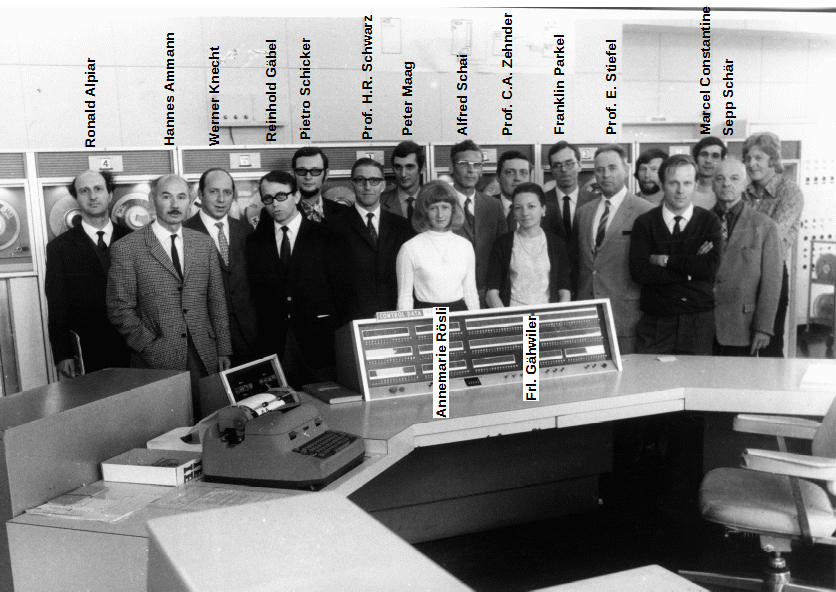
“The commission made the decision in that same year [1968] to purchase a new mainframe. This was a dual system comprising the models CDC 6400 and CDC 6500 combined with a complex multi-device operating system that needed to be adapted for ETH. In 1970, the Data Centre and the computer scientists purchased the new “RZ” building in Clausiusstrasse, where IT Services is still situated to this day, while also bringing the new computer system into service at the same time… (IT at ETH Zurich 1948–1981 Between science and service)” (in German).
Images of CDC in use at ETH
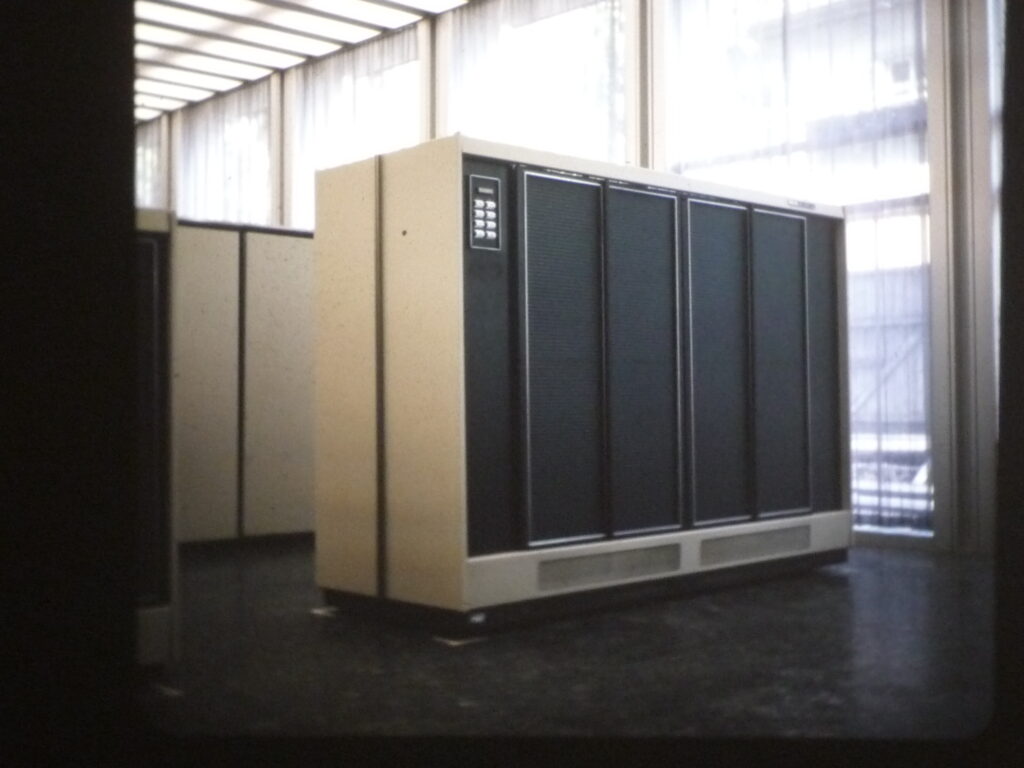
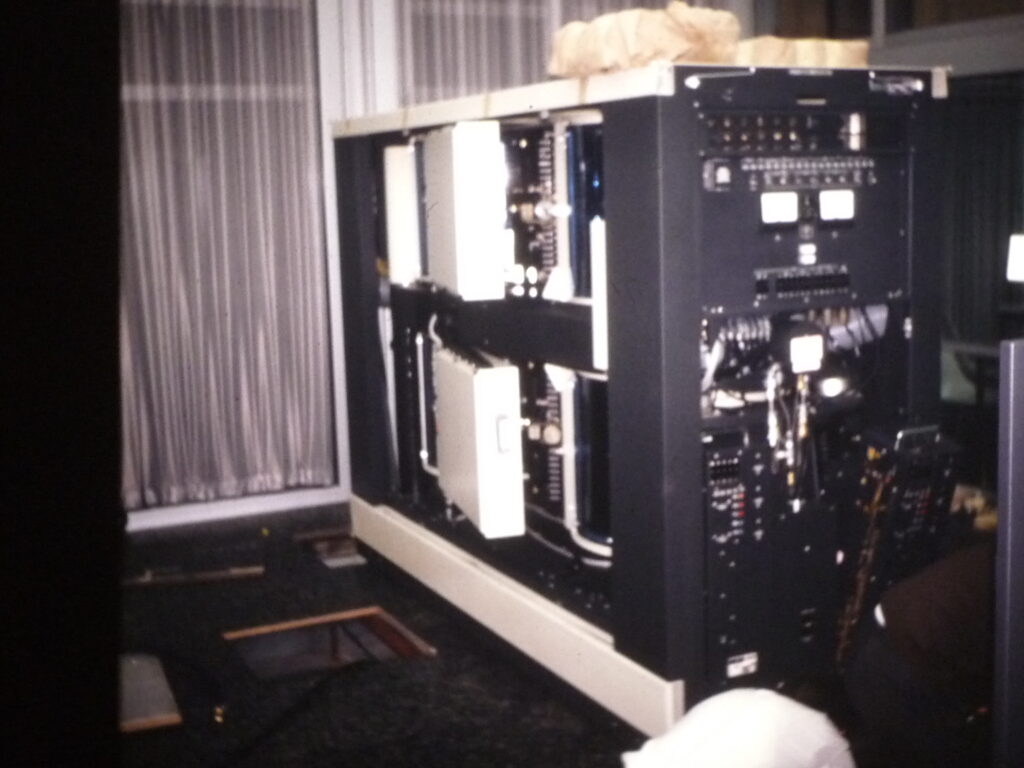
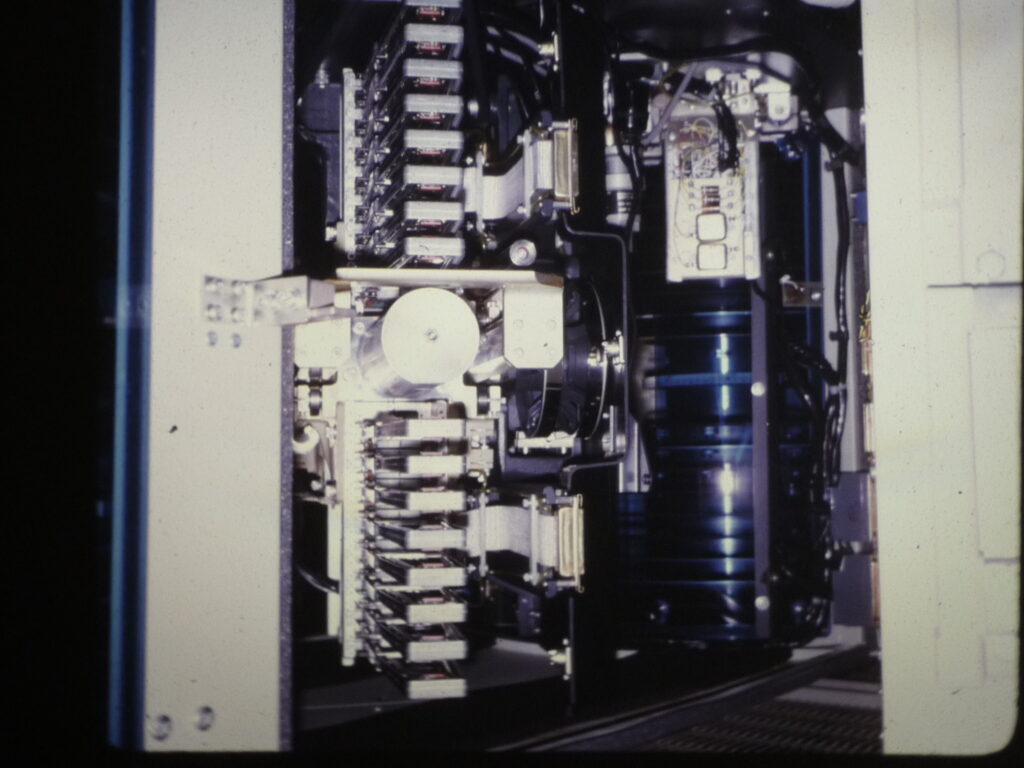
Searching for comparisons
Comparisons with today would impressively illustrate the sheer progress that technology has made in the last 50 years. But alas, such a comparison isn’t that easy. Modern systems have fast but volatile memory (RAM) as well as non-volatile, slow, bulk storage devices (disks, SSD). Old computers usually only had slow memory (magnetic-core memory, drums or disks), and these were expensive enough in their own right!
- RAM = Random Access Memory
- SSD = Solid State Drive or Solid State Disk
Dieter Gut drew upon the internet and the ETH library, including the works of Alfred Schai (first Head of the RZETH Data Centre), as sources.
Memory & storage comparison
- A smartphone, for example, has 8 GB of RAM and a 64 GB of SSD.
- A computer in the ETH Central Bodies has 32 GB RAM and a 512 GB of SSD. And there is an upward trend in this area.
- This means that a smartphone could store the content of around 40,000 of these magnetic disks.
- A Central Bodies PC could host around 320,000 of these disks.
“Taking a closer look at the CDC manual shows that each CDC 6638 has 128 disk surfaces, or 64 disks,” wrote Peter Staub. “Capacity is described as follows: “Data Capacity: Each track has a maximum practical capacity of 41,920 data bits (10 records). One disk surface, therefore, can contain a maximum of 8,048,640 data bits (192 tracks times 41,920 data bits). An entire disk file can contain 1,030,225,920 data bits (128 data storage surfaces times 8,048,640 data bits) or 171,704,320 6-bit characters.” So based on his calculations, that would be a total of around 130 MB (8-bit) per CDC 6638.”
The original manual from the Control Data Corporation for the magnetic-disk file system is still available at: http://www.bitsavers.org/pdf/cdc/cyber/peripheralCtlr/60196200_6638_Disk_File_System_808_Disk_File_Reference_Dec66.pdf
Size comparison
It becomes much more impressive when you compare sizes: 0.2 m² versus 6 nm², or roughly a grain of dust measuring 0.1 mm along the edge relative to the area of all of Switzerland.
Price comparison
Prices are also interesting to look at. These days, you can get 4 TB of storage for less than 100 CHF. By that reckoning, the memory shouldn’t have cost $250,000, but a mere 0.03 CHF.
Peter Staub is not sure if the price of CHF 250,000 quoted for the CDC 6638 is correct. The entire purchase for the CDC 6400/6500 cost CHF 26 million in 1969. The bill for a CDC LP512 line printer was over CHF 500,000.
More facts
- A CDC 6603 disk device (1970) had 32 surfaces (i.e. 16 disks) measuring 26 inches.
- The device was able to store 7,471,104 60-bit words.
- This converts to 1,669 MB per surface.
- The disks turned at 900 rpm.
- Max. transfer rate 1 MB/s
- The first devices were reported to have gone up in flames following a head crash.
- A CDC 6603 disk cost $205,000 back then.
- Regarding the disk drives: The CDC 6400 and CDC 6500 each had a CDC 6638 disk file system. The CDC 821 could be used by both computer systems.
- Way back in September 1956, IBM presented the first magnetic hard disk drive (Wikipedia). Our object here is a magnetic-disk storage system, probably from the 1960s.
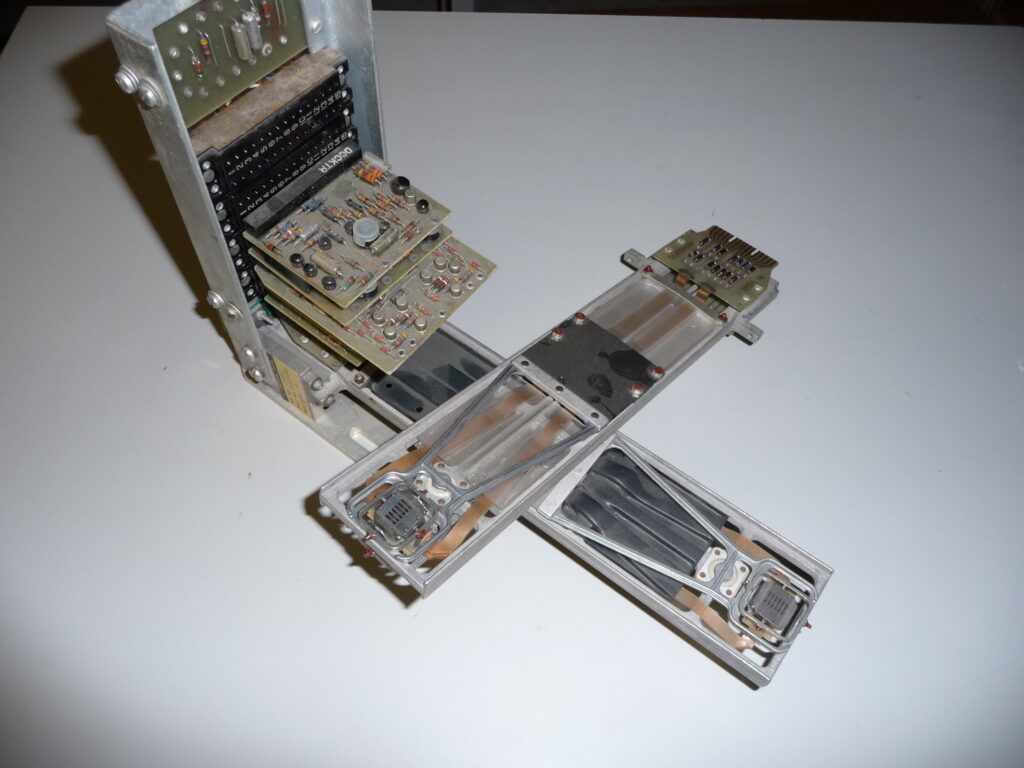
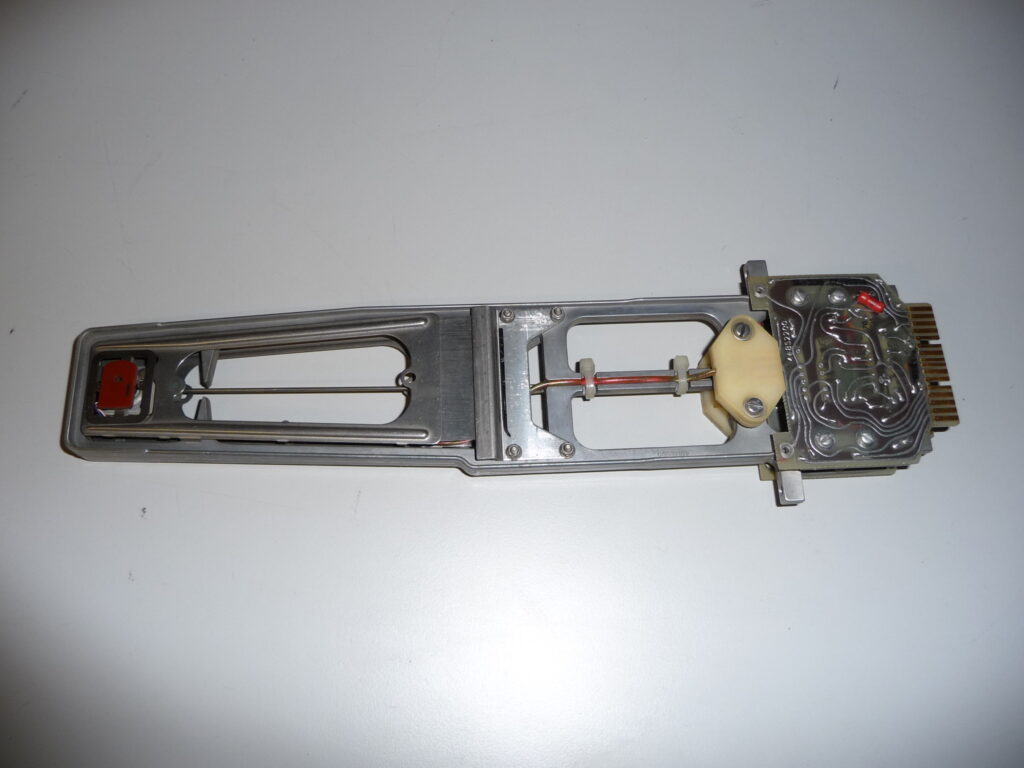
Peter Staub has also found a summary that presents the evolution of “computer science” in a somewhat different light—see the PDF on the ETH website “History / ITS history.
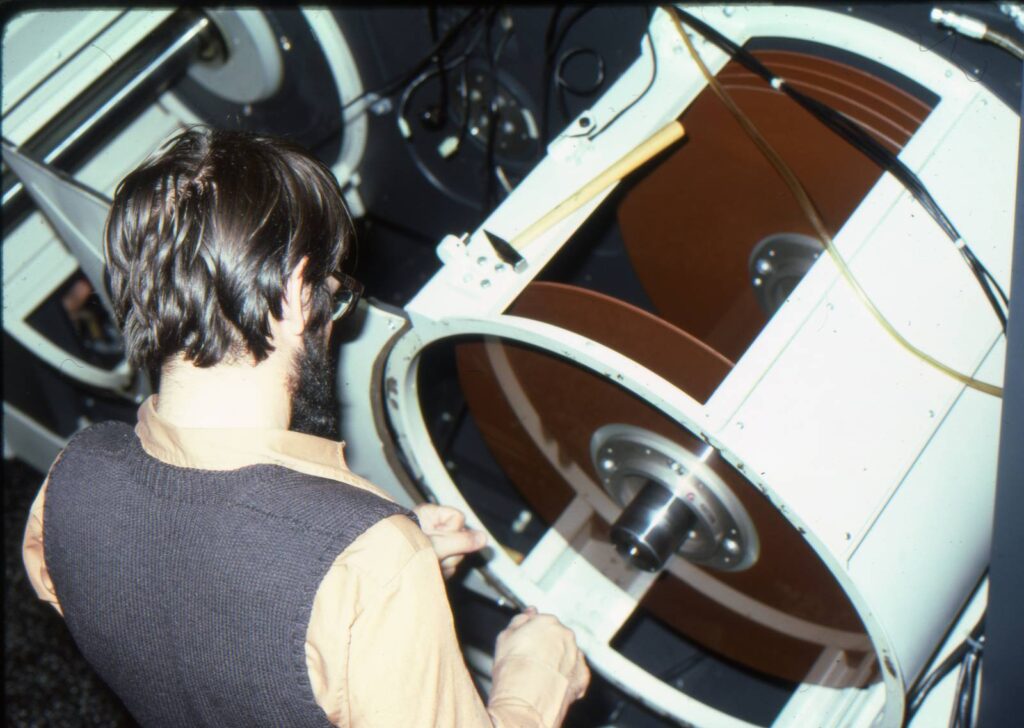
Disassembling and reassembling a disk pack was a difficult and delicate mechanical task that was usually performed by the manufacturer’s maintenance technician. It is possible that Rolf Müri was a technician at CDC before working in Franz Bachmann’s VPP group. We had several people with similar backgrounds at ETH and in IT Services, where technicians employed by the manufacturers later became IT Services staff.
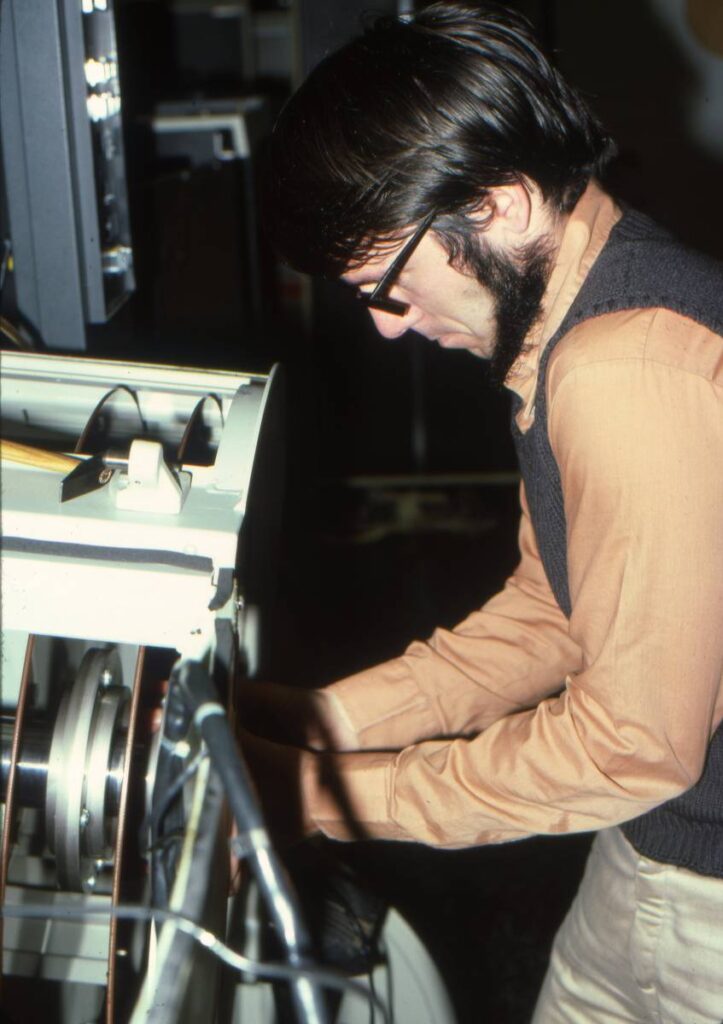
Disks were only replaced if they were defective, or if the new disks were much bigger (in which case they were replaced together with the head units). Compared to the past, the distances between head and disk are tiny today—assuming that a given device even uses moving parts in the first place.
These days, when disks are assembled in clean-room environments and hermetically encapsulated, it seems extraordinary that everything was done completely out in the open back then. Today, they also feature integrated filters that absorb any minuscule particles during operation. Encapsulation didn’t arrive until very late. It was a change that came about with much fanfare with the introduction of thin-layer technology in the late 1980s/early 1990s, 10 to 20 years after this photo was taken.
History of VPP
It’s interesting what we managed to find in our research. There might be material for a topic in its own right, if we can get more information on this.
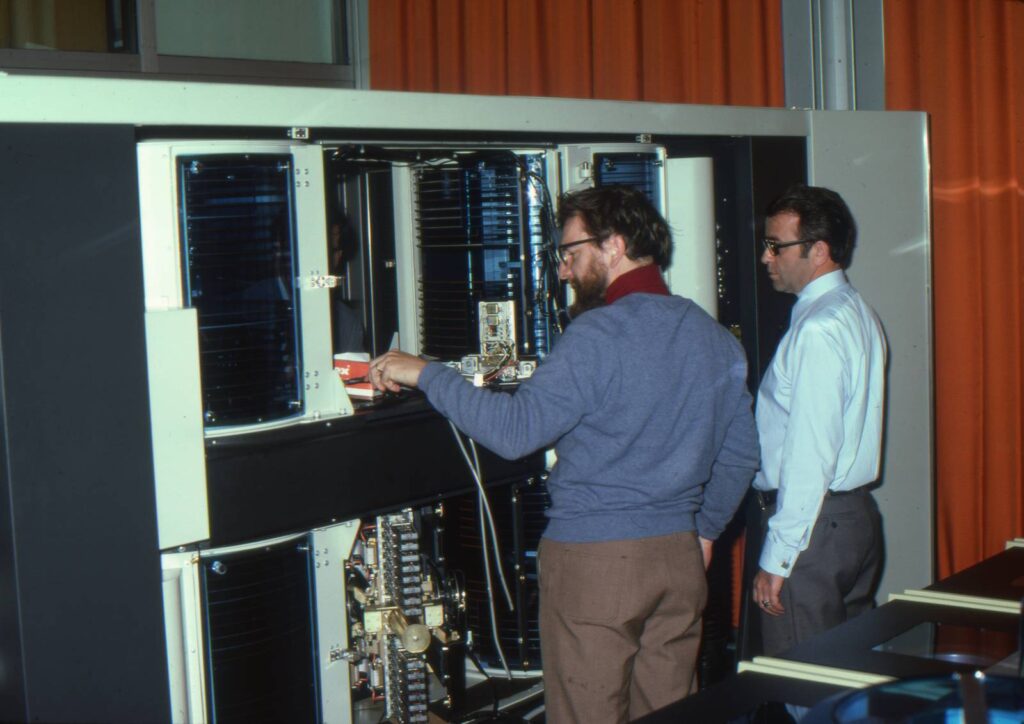
Franz Bachmann was Head of VPP (Distributed Printing and Plotting) for a long time and worked at IT Services until 2010/2011, serving at ITS System Services for many years. After 2005 or 2007, he then joined ITS BD, after which he left to enjoy a well-earned retirement.
Right at the start, there was the usual distribution of line printer outputs in trays at the Data Centre, which is what gave rise to VPP. In other words, people would provide their input (programs and data on punch cards or magnetic tape) at a counter, and then collect their output (lists from line printers) from the same counter. Larger clients had their own tray where output was stored so that they could come and collect it even if the counter was unmanned. With printers being distributed at locations away from the Data Centre, there was a need for methods of rerouting output to these printers instead of trays. One of these methods would become VPP, which as we know became today’s IT Services Print Service.
«Accordingly, both Franz Bachmann and Reinhold Gaebel were originally from the Data Centre. Franz specialised in printing from the outset. As far as I’m aware, Reinhold primarily focused on user support back then. He became head of what was then the User Support division in the subsequent organisation and was the predecessor of Wolfgang Korosec, who developed this section into what would become the TIM division (Technology and Information Management).» (Peter Staub)
Your story
What links you to these magnetic disks? Were you involved in their use, or do you know someone who worked with them? Or can you tell us more about the former VPP? If so, we’d appreciate hearing from you with your story as a comment to this post. And if you have an IT Find for our inside|out section, please contact us.
Internet research / sources
During our research we encountered so many intriguing pages and articles that we can strongly recommend to you.
- Data Centre (RZETH) (ETHistory) in German
- IT Services: From computing for research to support for all core processes ETHistory in German
- Albert Schai’s Data Centre ETHistory in German
- IT concept of ETH Zurich for the years 1994 onwards Proposals of the ETH Zurich IT Concept working group ETHistory in German
- Information and Communication Technology Concept (ICT Concept) of ETH Zurich 2003 – 2007 ETHistory in German
- Zurich University Information Technology 1948– 2003, where science, user needs and construction collide (Prof Dr Carl August Zehnder, Professor Emeritus for Information Technology, ETH Zurich) ETHistory in German
- D-INFK Institutional Development ETHistory
- Hard disk drive (Wikipedia)
- CDC = Control Data Corporation (Wikipedia)
- The CDC 7600 (Bernd Leitenberger)
- Six megabytes per square metre of hard disk (Focus Online) in German
Contact
The inside|out Editorial Team
- https://ethz.ch/services/en/organisation/departments/it-services/inside-out.html
- insideout@id.ethz.ch
Previous IT Finds to guess
History / IT Services & ETH write history
More about IT Services & ETH history in the ITS Blog and on the ETH website.


